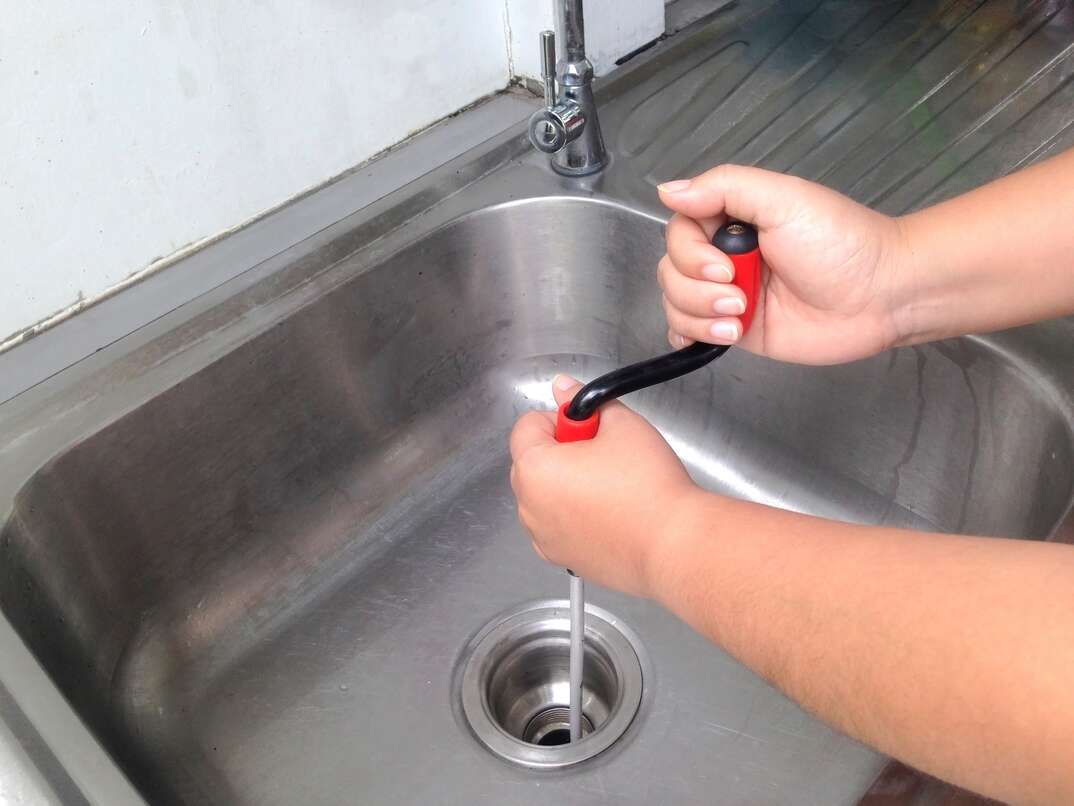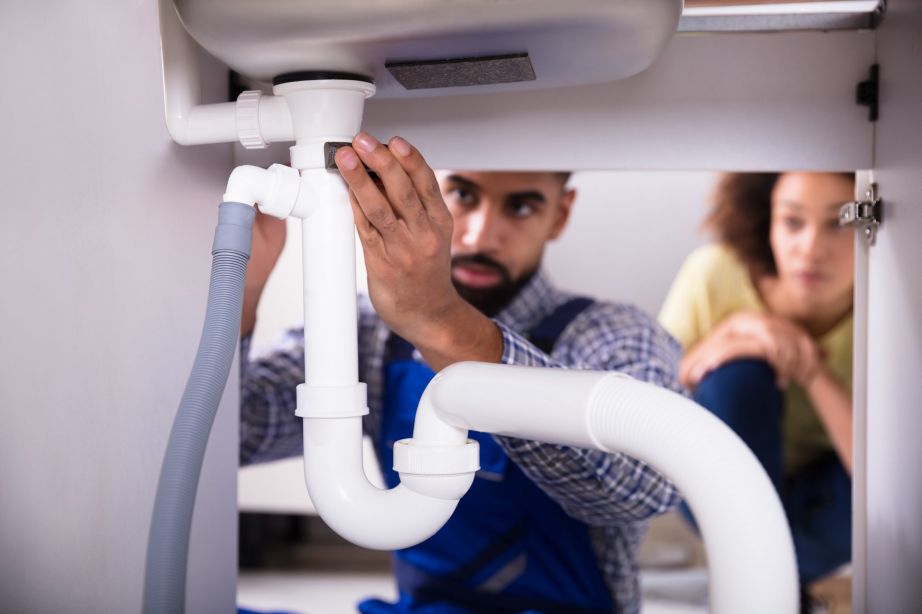Trusted Strategies For Addressing A Slow-Draining Sink
Trusted Strategies For Addressing A Slow-Draining Sink
Blog Article
On this page on the next paragraphs you will find additional superb answers in regards to Solved! How to Fix a Slow Sink Drain.

Introduction
We've all been there: You're brushing your teeth or cleaning your hands, and you notice the water merging in the sink. As opposed to swiftly swirling away, it lingers, transforming your once-refreshing early morning routine right into a miniature swamp scene. A slow-draining sink isn't just aggravating; it's often a sign of larger plumbing concerns lurking below the surface. The good news is that most slow-draining sinks can be taken care of with a little knowledge, a couple of fundamental devices, and some patience. All set to tackle this project head-on? Allow's roll up our sleeves and dive right in.
Understanding the Root Causes Of a Slow-Draining Sink
Before you begin poking around in your pipes, it assists to recognize what might be causing the downturn. Comprehending the origin makes it simpler to pick the best solution.
Usual Wrongdoers Behind Slow Drainage
So, what's obstructing things up? Normally, it's a combination of everyday particles-- think hair, soap residue, toothpaste deposit, and remaining food particles. In time, these tiny bits build up and cling to the pipeline walls, progressively tightening the flow and making it harder for water to pass through. Sometimes, mineral deposits from hard water can also contribute to the crud, producing the perfect tornado for stubborn blockages.
When is it Time to Take Action?
If you observe the water draining slower than usual, it's an excellent idea to interfere earlier instead of later on. Waiting also long could result in finish clogs, undesirable smells, or even pipeline damage. If the water takes more than a couple of secs to clear out after shutting off the tap, consider it a red flag and get ready to put on your do it yourself hat.
Devices and Materials You'll Require
The right devices make all the difference. Luckily, you will not require a completely equipped plumbing's van to finish the job.
Crucial Devices for Do It Yourself Fixes
A plunger is your go-to starting point. A small, sink-sized bettor develops suction that can displace small blockages. For more consistent blockages, a drainpipe snake (occasionally called a plumbing technician's auger) functions marvels. A set of handwear covers, a flashlight, and perhaps a pair of protective goggles are also useful.
Recommended Cleansing Solutions
Mild recipe soap and warm water can help break down oily build-up. A blend of baking soft drink and vinegar is a time-tested natural remedy, and enzymatic cleansers supply an even more environment-friendly approach. Keep chemical drainpipe cleansers as a last option, as they can be rough on your pipes.
Security First: Safety Measures and Preparations
Prior to you launch into unclogging mode, think about safety. You're taking care of possibly unclean water and debris, so slip on a pair of gloves. If you're making use of chemical cleaners, make certain the area is well-ventilated and adhere to the guidelines on the tag.
Protective Equipment and Office Setup
Set some old towels or rags around the sink area to capture splashes. Remove any items that may get in your means, like soap dispensers or tooth brush owners. See to it you have great lighting-- grab a flashlight if needed.
Step-by-Step Overview to Taking Care Of a Slow-Draining Sink
Currently, let's enter into the nitty-gritty. This detailed procedure will certainly guide you via basic methods to restore your sink's drain.
Action 1: Eliminate and Clean the Stopper
Commonly, the stopper (that little plug you lower to block water) is the first wrongdoer. Remove it very carefully and clean off any hair or gunk trapped around its base. Wash it completely before putting it back in place.
Action 2: Use a Bettor to Dislodge Debris
Got that bettor ready? Setting it over the drain and give it a few firm pumps. The concept is to create suction that can loosen any kind of obstruction. If you see littles debris drifting up, you get on the best track.
Step 3: Try a Drain Snake or Wire Hanger
If the plunger doesn't suffice, it's time to bring out the drain snake. Carefully feed it right into the drain and twist as you go. You could feel some resistance-- that's likely the blockage. Maintain turning and pulling until you get rid of the blockage. If you don't have a drainpipe snake, an aligned cable wall mount can work in a pinch.
Tip 4: Apply a Do It Yourself Drainpipe Cleaner
An all-natural cleaner made from cooking soda and vinegar can break down recurring crud. Put half a mug of baking soft drink into the drainpipe, complied with by half a cup of vinegar. Let it fizz for about 15 mins, then flush with warm water. This chemical reaction typically does wonders for minor blockages.
Tip 5: Reconstruct and Evaluate the Sink
Placed everything back together and run the tap. Does the water now swirl down the tubes at a commendable rate? If yes, give yourself a pat on the back. If not, don't anguish-- there are still a few more tricks up your sleeve.
Alternate Approaches for Stubborn Clogs
Not all clogs are created equal. If your sink still rejects to work together, think about these different services.
Baking Soda and Vinegar Method
We already touched on this, but it deserves noting once again. This mild, green method is much safer than chemical cleaners and often rather efficient.
Enzymatic Drain Cleansers
Enzyme-based cleansers utilize natural microorganisms to digest raw material. They're an outstanding choice if you're seeking to avoid extreme chemicals. Simply bear in mind, they may take a bit longer to work their magic.
Chemical Drain Cleaners: Pros and Cons
Chemical cleaners can blow up via challenging obstructions quick, but they're not without drawbacks. They can generate heat and fumes, damages pipes if utilized exceedingly, and pose environmental risks. Use them sparingly, and always follow the instructions carefully.
Safety Nets to Maintain Your Sink Flowing
Prevention is the best treatment. By taking on a few simple behaviors, you can maintain your sink from decreasing to begin with.
Routine Cleaning Behaviors
Wipe down the sink basin and component location routinely. Get rid of hair or food bits before they have an opportunity to wash down the drain.
Preventing Harmful Substances Down the Drain
Hesitate prior to discarding coffee grounds, grease, or coarse vegetable scraps down the sink. These offenders hold on to pipe walls, developing obstructions gradually.
Routine Maintenance Checks
Schedule a quick regular monthly evaluation. Run warm water via the sink for a few mins, taking note of the flow. If it seems slow, act fast prior to it becomes a full-blown clog.
When to Call a Professional Plumbing Technician
Often, regardless of just how tough you try, that clog simply won't budge. That's when it's time to bring in the pros.
Signs That Show an Extra Serious Concern
If your sink drains slowly despite several efforts, or if you discover water backing up in various other components (like your shower or commode), you may have an extra significant plumbing problem prowling much deeper in the system.
Balancing Do It Yourself Initiatives with Expert Assistance
While DIY can save you cash and provide a feeling of accomplishment, there's no shame in calling an expert. An expert plumbing can assess your entire plumbing setup, ensuring there's no underlying damage or lasting issue that can cost you extra down the road.
Comparing Costs and Long-Term Solutions
Prior to making a decision, consider the big picture. An affordable, quick fix could fix the issue briefly, but buying a more permanent option can save you money and anxiety in the future.
Evaluating the Expenses of Do It Yourself vs. Specialist Repairs
DIY solutions often set you back bit greater than the price of a bettor or a bottle of cooking soft drink. Specialist services, on the other hand, included a price tag yet may stop repetitive issues and expensive fixings later.
Investing in Top Quality Fixtures and Upgrades
If your sink's design adds to regular blockages, it could be worth upgrading to higher-quality components or altering the plumbing format. Consider this an investment in your home's functionality and comfort.
Verdict
A slow-draining sink can seem like a minor inflammation, yet it's often a sign that your pipes needs a little TLC. By recognizing the root causes, employing the right tools and techniques, and dedicating to basic safety nets, you can keep your sink streaming easily. And when all else falls short, never ever hesitate to contact a specialist-- your home's pipes deserves the investment in treatment and maintenance.
Three Common Ways to Fix a Slow Drain
Baking Soda Method
Boil a full pot of water. Measure out cup of baking soda and pour it down the drain. Then take cup of the magical cleansing substance known as white vinegar and drop that down there too. Allow the mixture to fizz in the drain for five minutes as the vinegar and baking soda combine. Now dump in that whole pot of boiling water. This combination of cleaning substances should clear out anything that is causing your sink to drain slowly. If it doesn t...
Zip-It
If the baking soda method doesn t clear out your drain, it may be because a significant amount of hair and/or other debris has collected there and you need to remove it. Purchase a Zip-It tool at any home improvement or hardware store and insert it into your drain. It will catch any collected hair or debris that s blocking the flow of water. Pull it out. If it s got a big clump of hair, etc. on the end, you ve probably got your culprit.
Drain Cleaner
If these methods don t work, there is the standard drain cleaner that you can also buy in a hardware store or even your local grocery store. It s better if you can use a household solution, but these drain cleaners often work in a pinch. They re very simple to use. You generally just dump them in your drain and wait. If even this method is not effective, it may be time to call the plumber.
https://www.mrrooter.com/oneida/about-us/blog/2017/july/three-common-ways-to-fix-a-slow-drain/

We were shown that report on Solved! How to Fix a Slow Sink Drain through a pal on our other web page. Do you know about somebody who is enthusiastic about the niche? Do not hesitate to promote it. Thank you for being here. Revisit us soon.
Source Report this page